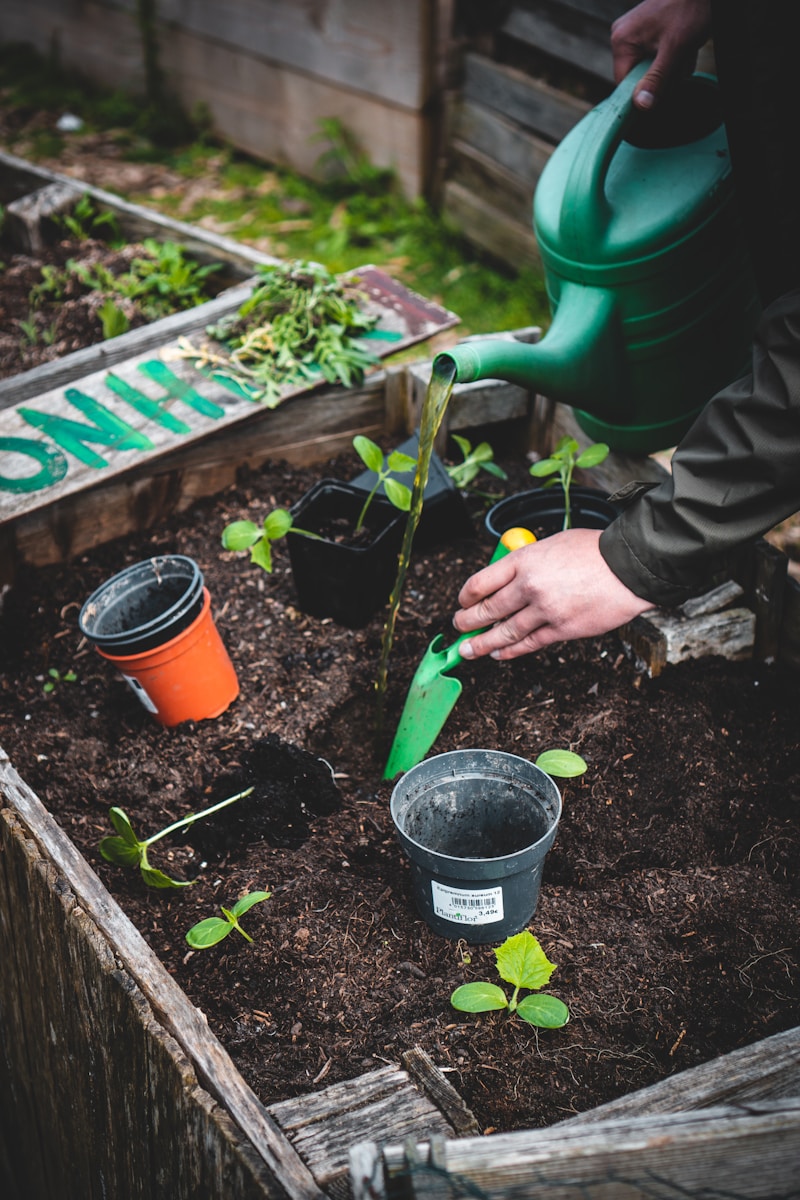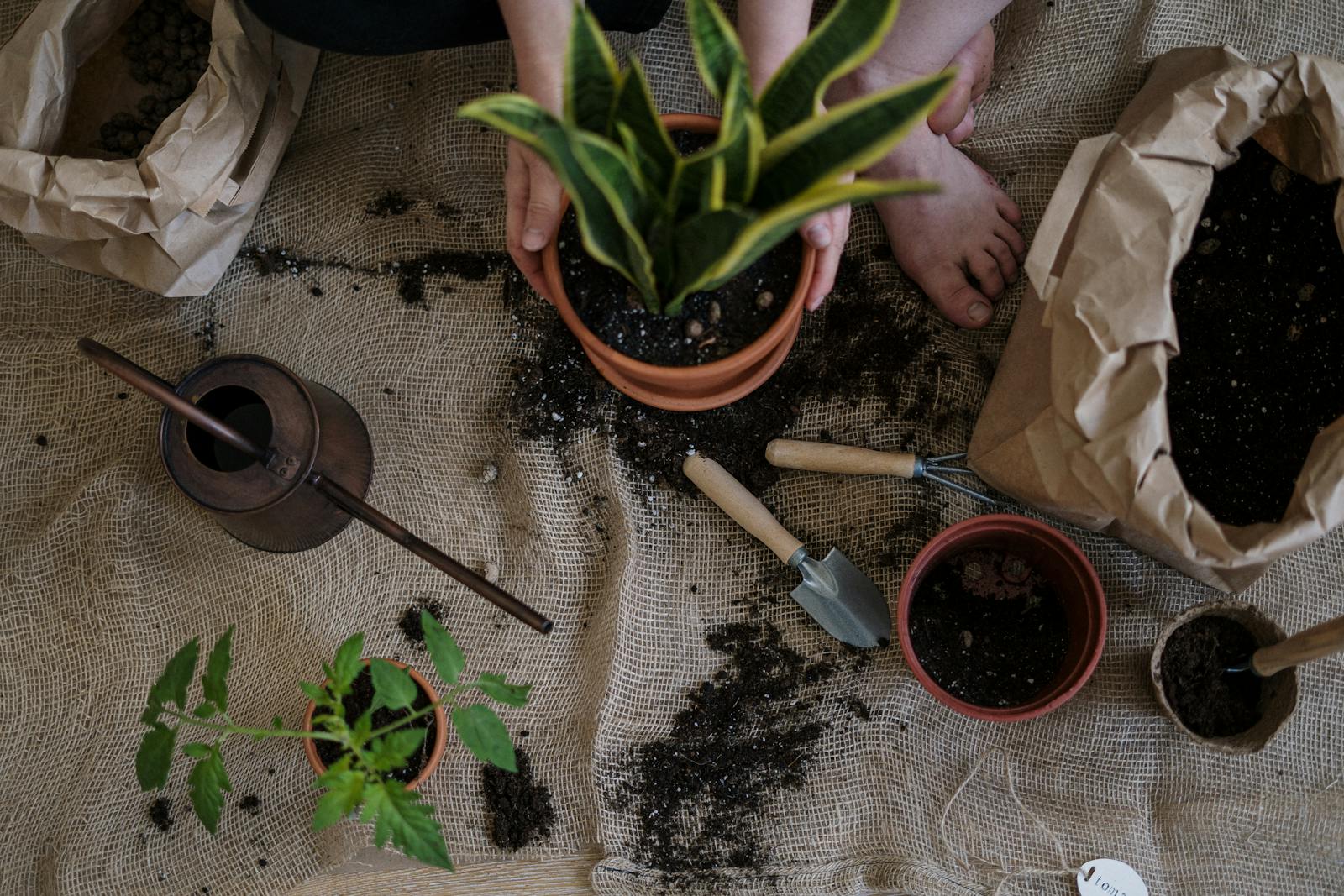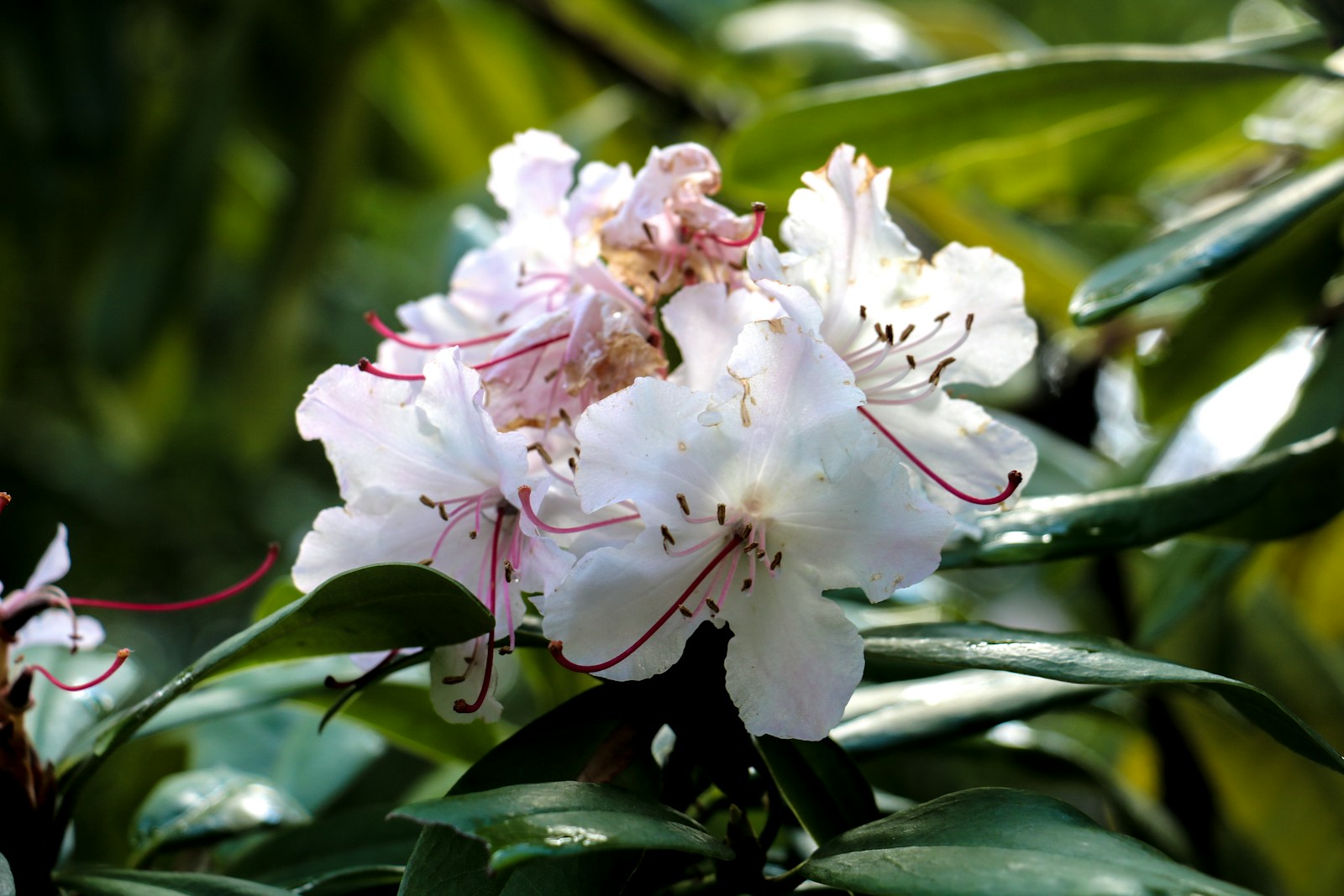How to Plan a Year-Round Garden: Seasonal Planting Made Simple
Understand Your Climate and Growing Zone
Building a successful year-round garden starts with understanding your local climate and USDA hardiness zone. These determine which plants will thrive in your area throughout the year. Knowing your average frost dates, rainfall, and temperature fluctuations helps you plan what to plant—and when to plant it.
Consult your local extension office or online tools to find your zone and recommended planting calendar. Adjustments may be needed for microclimates like urban heat islands or shaded yards. When you know your climate, you can build a seasonal planting schedule that supports growth, minimizes risk, and maximizes garden yield.
Map Out Your Garden Spaces Seasonally
A year-round garden thrives on smart layout and rotation. Divide your garden into distinct zones for warm-season crops, cool-season crops, perennials, and rest beds. Use raised beds, containers, and vertical spaces to adapt your plan to available room and sun exposure.
Incorporate succession planting by staggering sowing dates or following one crop with another in the same space. For example, plant spinach in early spring, harvest by late May, and replant with bush beans for summer. This strategy keeps your garden active and productive every month of the year.
Mapping your space seasonally reduces downtime and helps you maximize every square foot of soil.
Choose a Balanced Mix of Plants
To create a thriving year-round garden, include a mix of vegetables, herbs, flowers, and perennials. Grow cool-season crops like lettuce, peas, and kale in spring and fall. Opt for warm-season favorites like tomatoes, cucumbers, and peppers in summer. For winter, consider cold-hardy greens like spinach, mache, and collards under row covers.
Perennials such as rosemary, asparagus, and rhubarb return each year with minimal maintenance. Add native flowers to support pollinators, and evergreens for structure and color during dormant months. Diversity not only extends your harvest but also enhances visual interest and garden health all year long.
Use a Seasonal Planting Calendar
A planting calendar is your road map to successful year-round gardening. It tells you what to sow, transplant, and harvest each month based on your climate. Many extension offices offer region-specific charts that break planting windows into manageable segments.
Use the calendar to avoid overcrowding and to anticipate gaps between crops. Mark key tasks on a wall planner, digital app, or notebook to stay organized. Include reminders for pruning, fertilizing, and pest control alongside planting dates.
Following a well-planned schedule helps ensure that your garden transitions smoothly from season to season, with no wasted time or effort.
Incorporate Cold Frames and Row Covers
To extend your growing season, incorporate season-extending tools like cold frames, row covers, and hoop tunnels. These structures create a warmer microclimate, allowing you to grow crops earlier in spring and later into fall—and even over winter in milder zones.
Cold frames are mini-greenhouses built from reclaimed windows or clear plastic, great for hardening off seedlings or protecting greens. Row covers made of breathable fabric guard against frost, wind, and pests without overheating your plants. Use these tools to bridge seasonal gaps and keep fresh produce flowing year-round.
Practice Succession Planting for Continuous Harvests
Succession planting is key to keeping your year-round garden active and productive. Rather than planting everything at once, stagger your sowing every two to three weeks. This ensures you have a steady supply of fresh vegetables instead of a single overwhelming harvest.
For example, plant a row of lettuce or radishes early in the month and follow with another row two weeks later. You can also replace crops as they finish—grow spring peas, then replant that space with summer beans, followed by fall spinach. This method maximizes efficiency and keeps your garden visually and functionally full all year.
Choose Season-Appropriate Varieties
Not all plant varieties grow the same. For a successful year-round garden, choose cultivars specifically bred for the conditions of each season. Look for cold-hardy greens like ‘Winterbor’ kale or ‘Bloomsdale’ spinach for winter. In spring, try early-maturing carrots or compact peas like ‘Little Marvel.’
In summer, opt for heat-tolerant lettuces, drought-resistant herbs, and indeterminate tomatoes that produce all season. For fall, go back to cool-season crops with proven frost resilience. Selecting season-appropriate seeds ensures better yields and reduces stress on your plants—an essential tip for maintaining garden vitality every month.
Compost and Rotate Beds Regularly
Soil health is critical to a flourishing year-round garden. After each harvest, replenish the soil by adding compost, aged manure, or organic fertilizers. This restores nutrients and improves structure for the next round of planting. Composting also helps you recycle garden waste into valuable amendments.
Practice crop rotation by changing plant families each season in the same bed. For example, follow leafy greens with root crops, and then legumes. This reduces soil-borne diseases and pest buildup while promoting nutrient balance. Healthy, fertile soil is the foundation of sustained, productive gardening through all four seasons.
Design for Year-Round Visual Interest
A year-round garden should be as beautiful as it is productive. Combine seasonal vegetables with ornamental plants for visual interest in every season. Use colorful chard, purple cabbage, or variegated kale for vibrant foliage. Add bulbs like daffodils and tulips in spring, sunflowers in summer, and mums in fall.
Incorporate evergreen shrubs, ornamental grasses, and structural features like trellises or sculptures to provide interest when beds are bare. Group containers of pansies or violas for a splash of winter color near entryways. Thoughtful design turns your garden into a dynamic, ever-changing landscape year-round.
Include Indoor and Windowsill Growing Options
Don’t overlook indoor gardening as part of your year-round garden plan. Windowsills, sunny rooms, or grow-light setups allow you to grow herbs, microgreens, or leafy greens even when it’s too cold outside. Basil, parsley, cilantro, and chives thrive indoors with the right light and container.
Use self-watering pots or compact hydroponic systems to keep maintenance low. Growing indoors extends your access to fresh produce and keeps your gardening habit active through winter. It’s also a great way to start seeds early before transplanting them outdoors as the seasons change.
Track Your Planting and Harvesting Cycles
Keeping track of planting and harvesting dates is crucial for maintaining a productive year-round garden. Use a simple journal, calendar, or gardening app to record when you sowed seeds, transplanted seedlings, and harvested crops. This allows you to plan ahead, stagger plantings, and adjust timing based on seasonal performance.
Detailed records help you learn which varieties thrive in your space, when pests appear, and how long certain crops take to mature. Over time, your journal becomes a custom guide for your garden’s rhythm, supporting better decision-making for each season to come.
Plan for Storage and Preservation
A year-round garden often produces more than you can eat at once, especially in peak months. Planning for storage ensures nothing goes to waste. Learn basic preservation methods like freezing, drying, fermenting, and canning to extend the life of your harvest.
Store root vegetables like carrots and potatoes in cool, dark spaces. Herbs can be dried or frozen in oil for later use. Leafy greens may be blanched and frozen. Having a plan for your surplus allows you to enjoy homegrown produce even in the off-season, making your efforts more rewarding year-round.
Grow Perennials to Reduce Maintenance
Perennials are an excellent addition to a year-round garden because they come back each year, reducing the need for replanting. Herbs like oregano, thyme, and chives; fruits like strawberries, rhubarb, and blueberries; and flowers like echinacea or yarrow provide beauty and yield season after season.
Plant perennials in permanent beds or borders and give them space to spread. These plants require less input over time and often improve soil structure and biodiversity. Blending perennials with annuals balances long-term sustainability with short-term productivity, supporting a thriving garden in every season.
Adapt Your Garden Plan Each Year
Gardening is dynamic, and each year presents new challenges and insights. Review your previous year’s outcomes to refine your year-round garden plan. Consider what grew well, what failed, and why. Adjust your calendar, plant choices, and layout to reflect these lessons.
Weather patterns, pest populations, and soil conditions can change from year to year. Stay flexible and open to experimentation. Adapting your plan helps you build a more resilient and efficient garden that improves over time and continues to provide joy and sustenance in every season.
Celebrate the Seasonal Cycles of Your Garden
Finally, one of the greatest rewards of planning a year-round garden is developing a deeper connection to nature’s rhythm. Each season brings its own beauty, tasks, and triumphs—from sowing seeds in spring to harvesting abundance in summer, preparing beds in fall, and observing quiet growth in winter.
Use your garden not just for productivity but as a space for reflection, creativity, and joy. Celebrate seasonal transitions with garden rituals, seasonal decor, or by sharing your harvest with others. A year-round garden is not just about plants—it’s about cultivating a lifestyle that embraces the natural flow of time.
Frequently Asked Questions
What is a year-round garden?
A year-round garden is a thoughtfully planned space that produces plants, flowers, or food throughout all four seasons. By rotating crops, using season-extending tools like cold frames, and selecting plants appropriate for each time of year, gardeners can keep their space productive from January to December. Year-round gardens often blend cool-season and warm-season crops, perennials, and indoor growing strategies. This approach provides fresh harvests, visual interest, and garden activity no matter the weather. It also supports soil health and sustainability by keeping the garden engaged with nature’s rhythm year after year.
How can I start a year-round garden as a beginner?
Begin by understanding your local climate and planting zone, which helps you choose the right plants for each season. Start small with a simple garden bed or containers and a seasonal planting calendar. Grow easy cool-season crops like spinach in spring and fall, and warm-season ones like tomatoes in summer. Add perennials for year-long structure and start herbs or greens indoors in winter. Use row covers or cold frames to extend your growing window. With planning and patience, a beginner can enjoy gardening success in every season, gradually expanding into a full year-round garden system.
What are the best tools for year-round gardening?
Essential tools for a year-round garden include a quality trowel, pruners, watering can, and gloves. Season-specific additions include row covers, cold frames, and hoop tunnels for winter and fall, as well as trellises and shade cloths for summer. A compost bin keeps soil fertile year-round, and a garden planner or journal helps track planting and harvest times. For indoor gardening, grow lights and seed trays are useful during the colder months. With the right tools, managing a garden across all four seasons becomes more efficient, sustainable, and enjoyable—even in small or challenging spaces.
Which vegetables can I grow all year long?
Some vegetables are suited to year-round growing with the right techniques. Leafy greens like spinach, kale, Swiss chard, and arugula can be grown in spring, fall, and even winter under protection. Herbs such as thyme, chives, and mint thrive indoors or outside through multiple seasons. In summer, tomatoes, cucumbers, and zucchini flourish, while carrots, beets, and radishes offer continuity from spring to fall. With cold frames or hoop houses, even tender greens can survive into winter. Combining cold-hardy varieties and sequential planting ensures your garden stays productive all year.
How do I adjust my garden for different seasons?
Adjust your year-round garden by rotating crops, changing plant selections, and modifying care routines. In spring, prep soil and plant cool-weather crops. In summer, switch to heat-loving vegetables and water more often. Fall brings a return to cool-season crops and the chance to replenish soil. In winter, protect sensitive plants with row covers or move containers indoors. Use season-specific varieties and tools like compost, mulch, and grow lights to adapt as needed. Each season requires thoughtful planning, but small changes make a big difference in keeping your garden productive and beautiful year-round.
© 2025 GardeningandDecor.com. All rights reserved.



